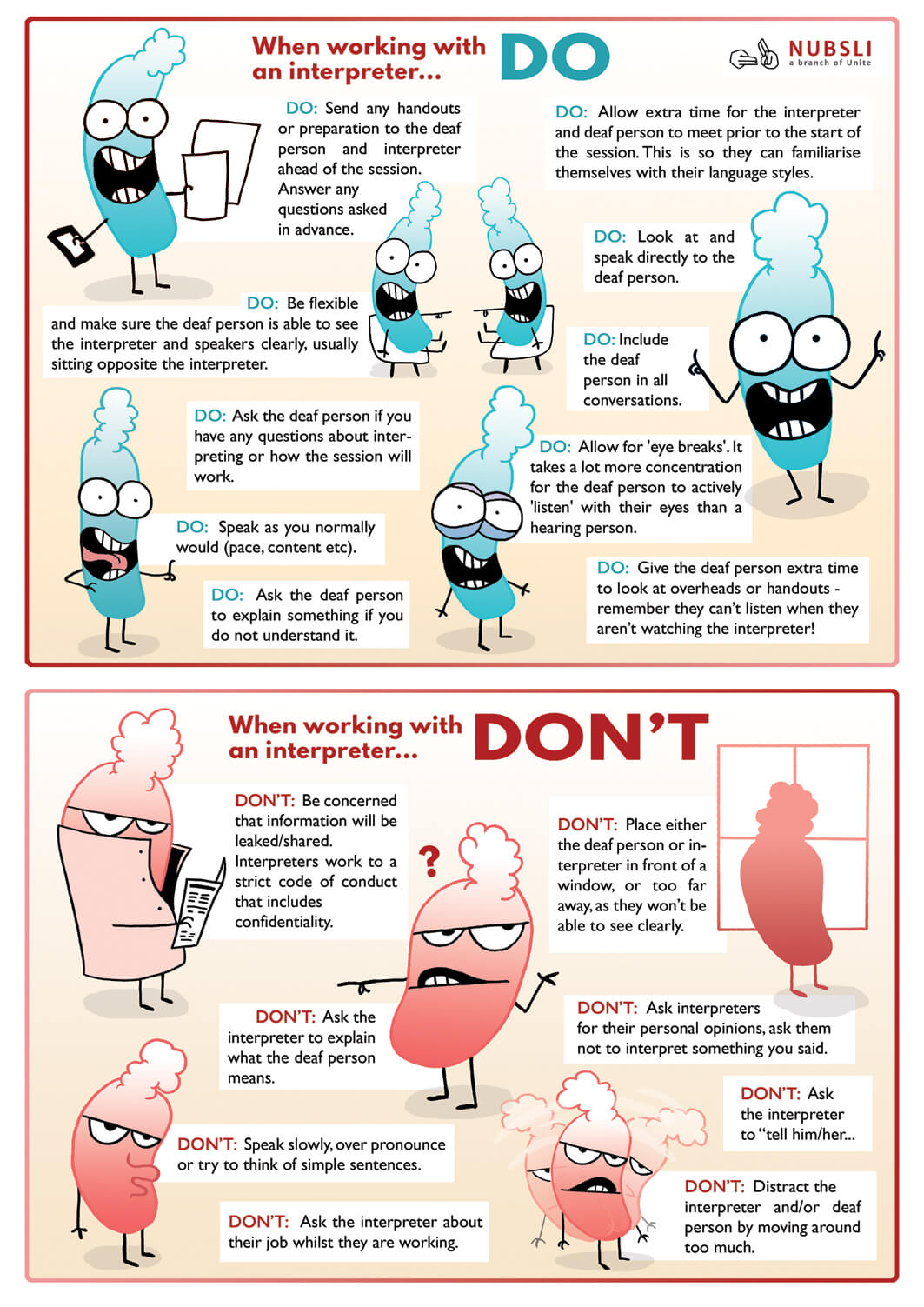Dos and don’ts of working with an interpreter

When working with an interpreter:
- Do send any handouts or preparation to the deaf person and interpreter ahead of the session. Answer any questions asked in advance
- Do be flexible and make sure the deaf person is able to see the interpreter and speakers clearly, usually sitting opposite the interpreter
- Do ask the deaf person if you have any questions about interpreting or how the session will work
- Do speak as you normally would (pace., content etc)
- Do ask the deaf person to explain something if you do not understand it
- Do allow extra time for the deaf person and interpreter to meet prior to the start of the session. This is so they can familiarise themselves with their language styles
- Do look at and speak directly to the deaf person
- Do include the deaf person in all conversations
- Do allow for ‘eye breaks’. It takes a lot more concentration for the deaf person to actively ‘listen’ with their eyes than a hearing person
- Do give the deaf person extra time to look at overheads or handouts – remember they can’t listen when they aren’t watching the interpreter
When working with an interpreter:
- Don’t be concerned that information will be leaked/shared. Interpreters work to a strict code of conduct that includes confidentiality
- Don’t ask the interpreter to explain what the deaf person means
- Don’t speak slowly, over pronounce or try to think of simple sentences
- Don’t ask the interpreter about their job whilst they are working
- Don’t place either the deaf person or interpreter in front of a window, or too far away, as they won’t be able to see clearly
- Don’t ask interpreters for their personal opinions, ask them not to interpret something you said
- Don’t ask the interpreter to “tell him/her…
- Don’t distract the deaf person or interpreter by moving around too much

